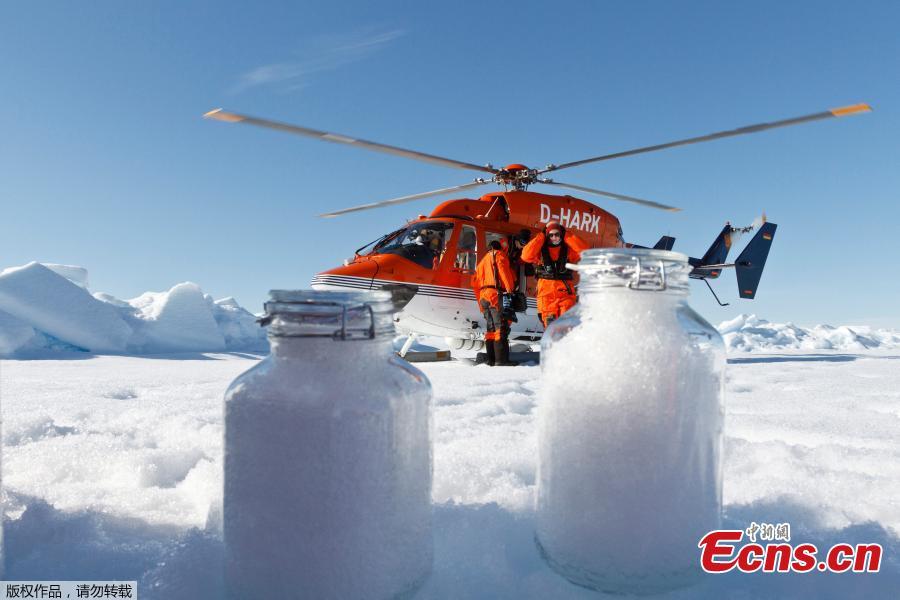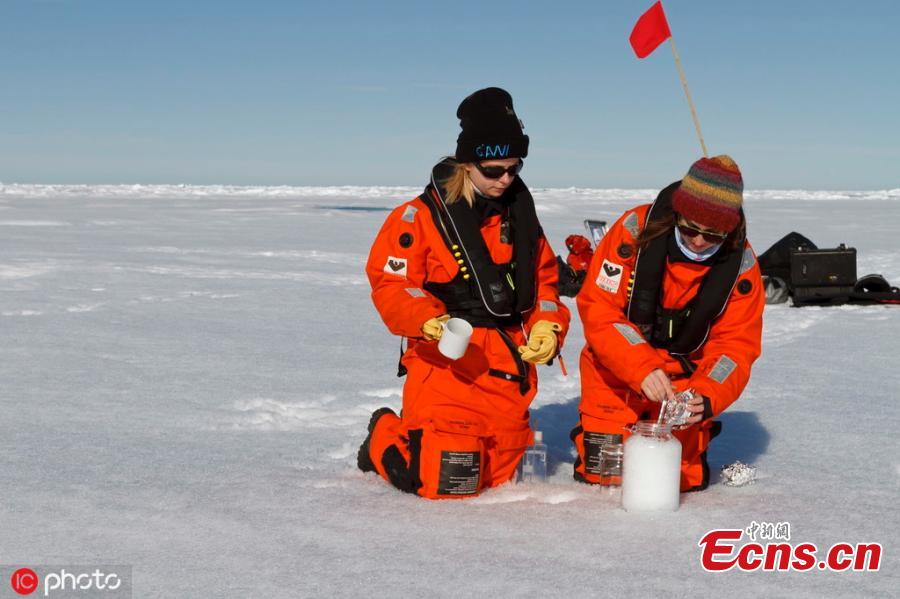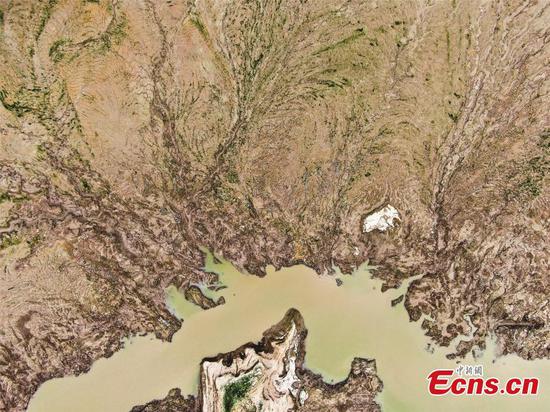
In this file photo taken on August 4, 2017, scientists from the Alfred Wegener Institute use the helicopter from the icebreaker research vessel Polarstern to collect snow samples in the Arctic. Minute microplastic particles have been detected in the Arctic and the Alps, carried by the wind and later washed out in the snow, according to a study that called for urgent research to assess the health risks of inhalation. Every year, several million tonnes of plastic litter course through rivers and out to the oceans, where they are gradually broken down into smaller fragments through the motion of waves and the ultraviolet light of the Sun. The new study, conducted by scientists at Germany's Alfred Wegener Institute and Switzerland's Institute for Snow and Avalanche Research, found that microplastic particles can be transported tremendous distances through the atmosphere. (Photo/Agencies)

Minute microplastic particles have been detected in the Arctic and the Alps, carried by the wind and later washed out in the snow, according to a study that called for urgent research to assess the health risks of inhalation. Every year, several million tonnes of plastic litter course through rivers and out to the oceans, where they are gradually broken down into smaller fragments through the motion of waves and the ultraviolet light of the Sun. The new study, conducted by scientists at Germany's Alfred Wegener Institute and Switzerland's Institute for Snow and Avalanche Research, found that microplastic particles can be transported tremendous distances through the atmosphere. (Photo/Agencies)

























